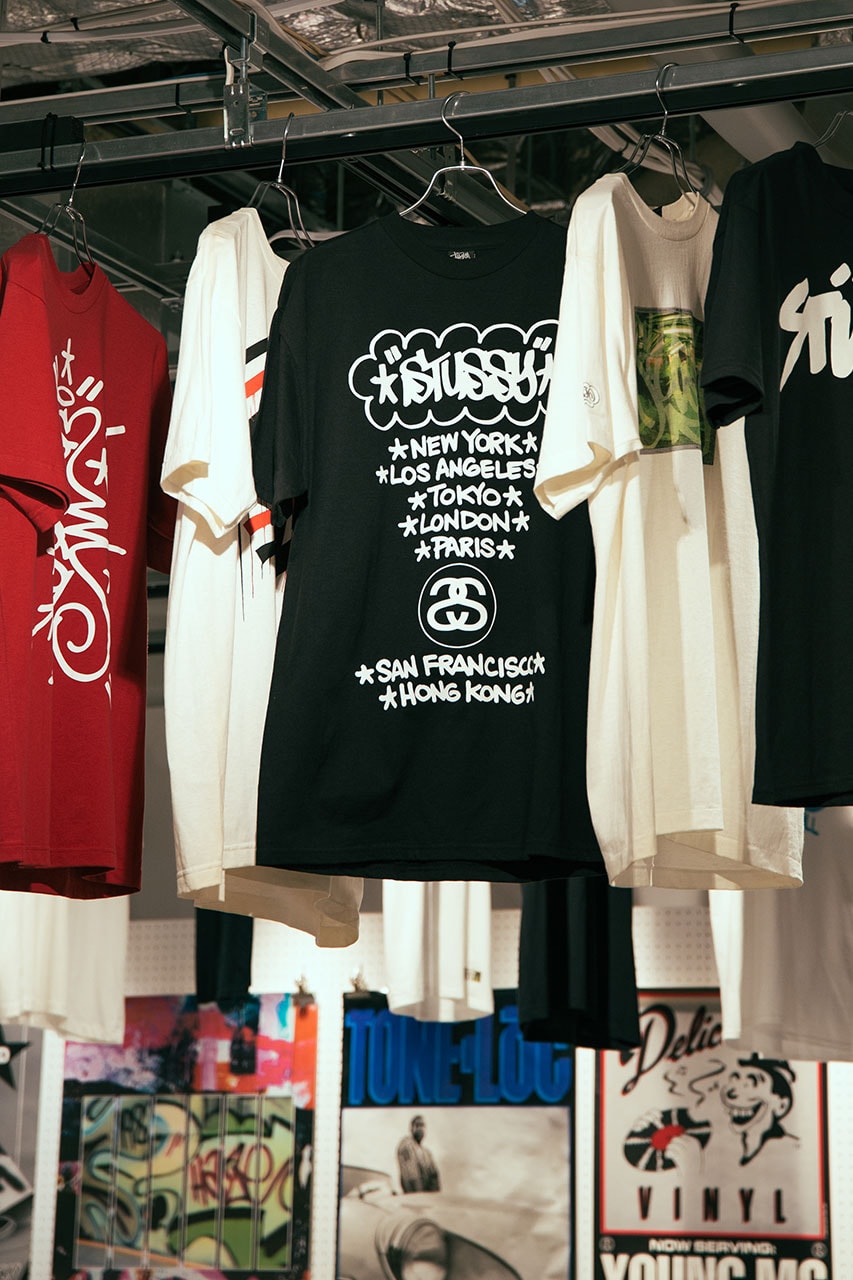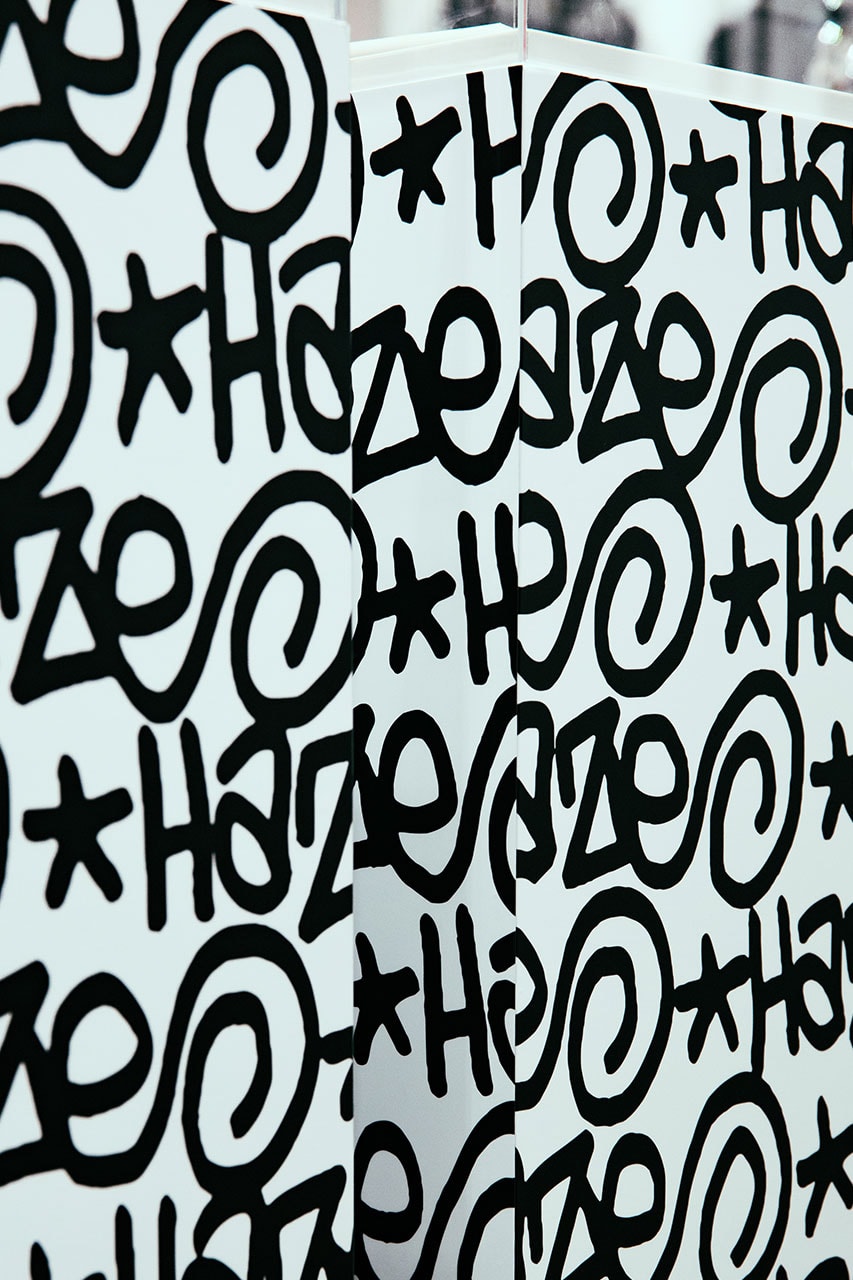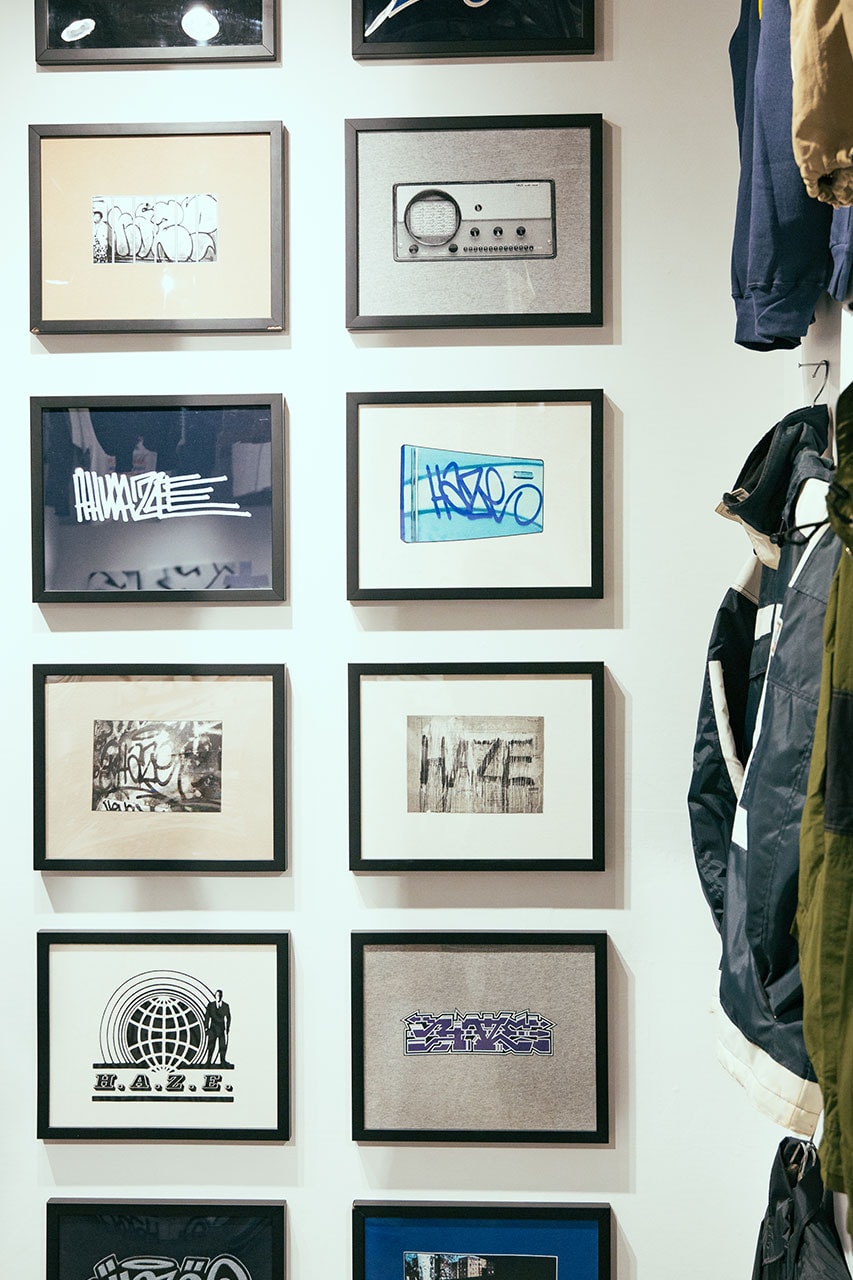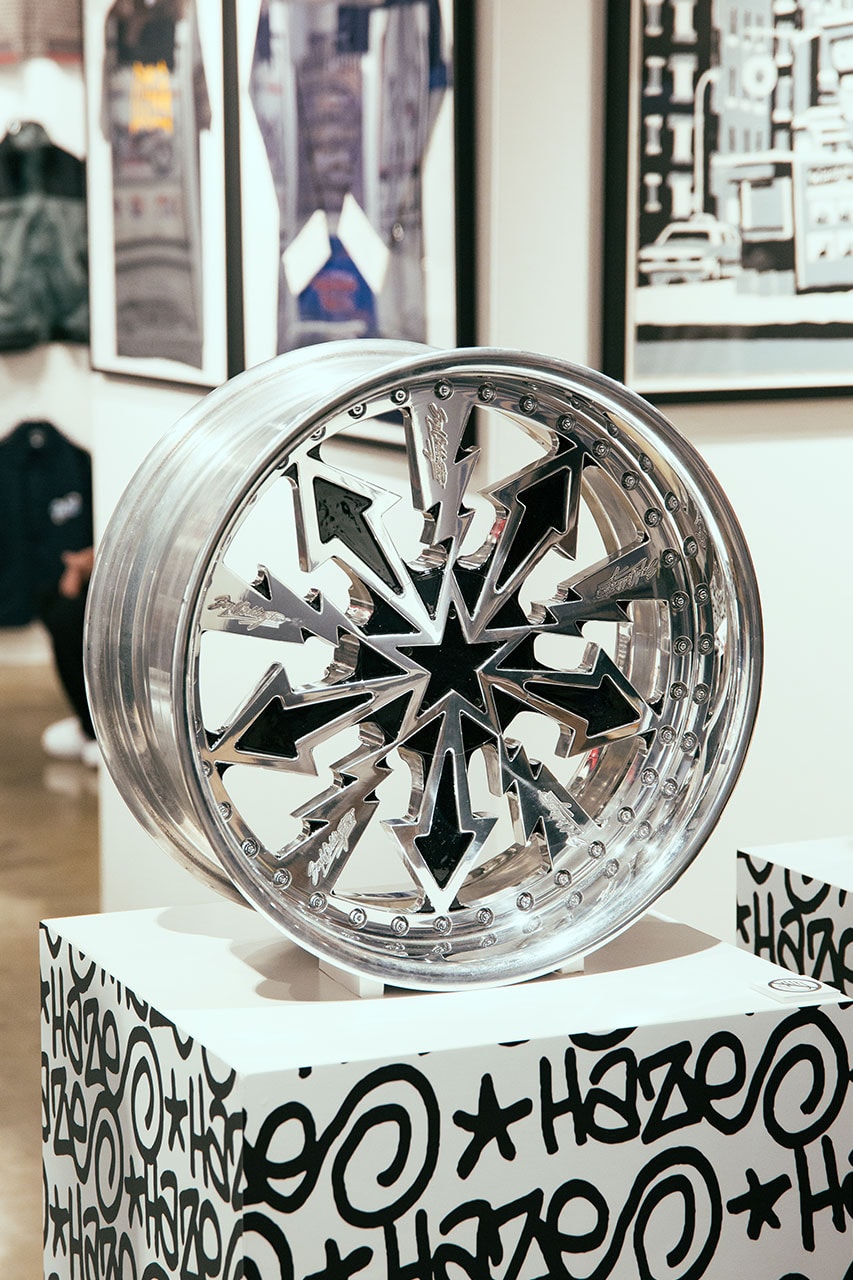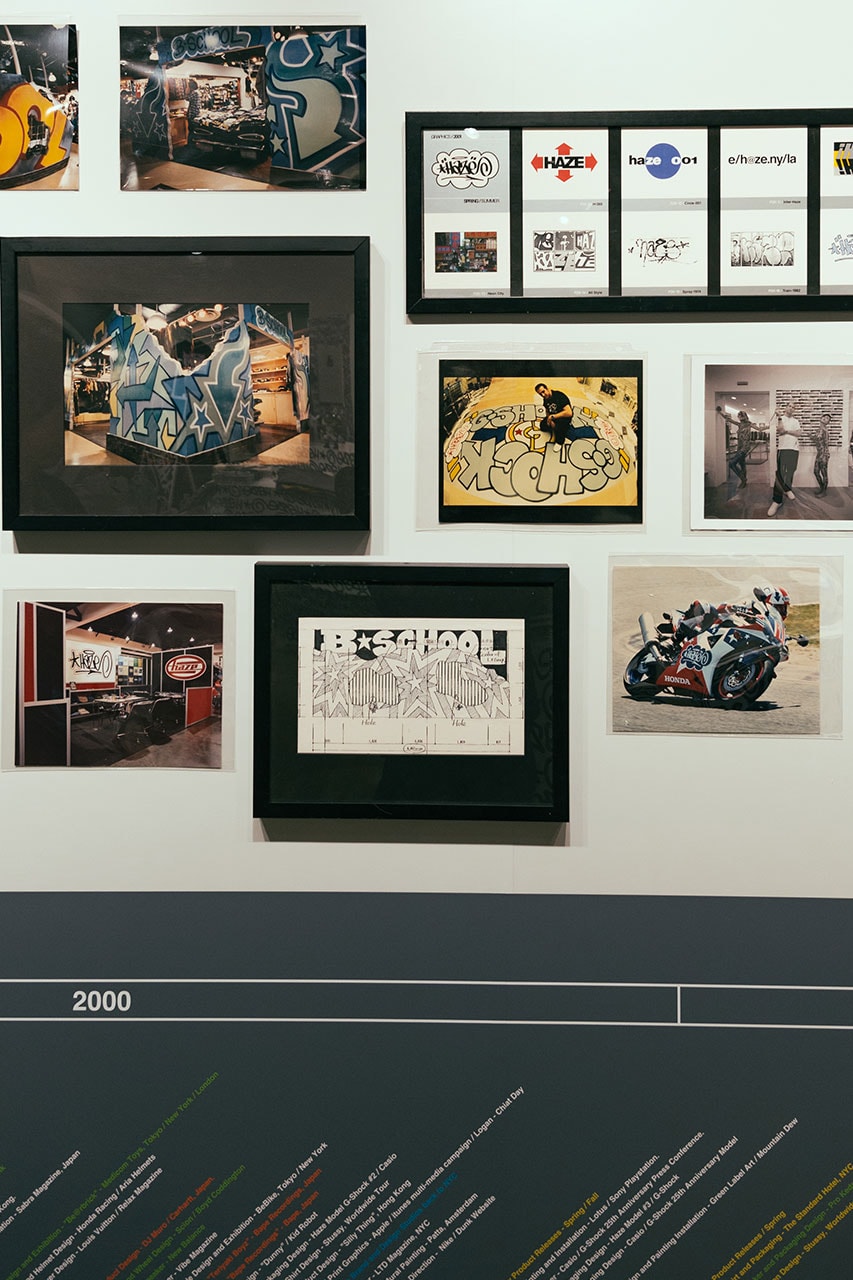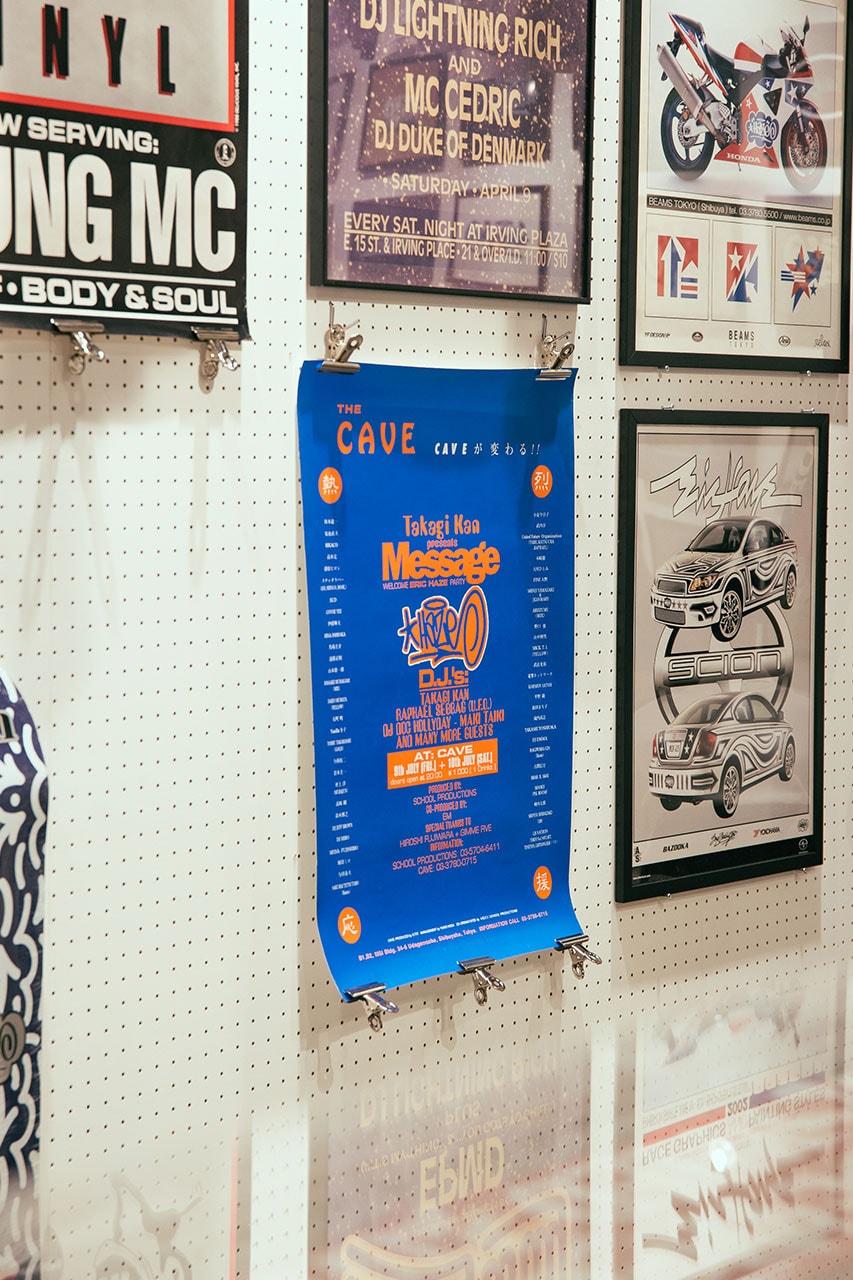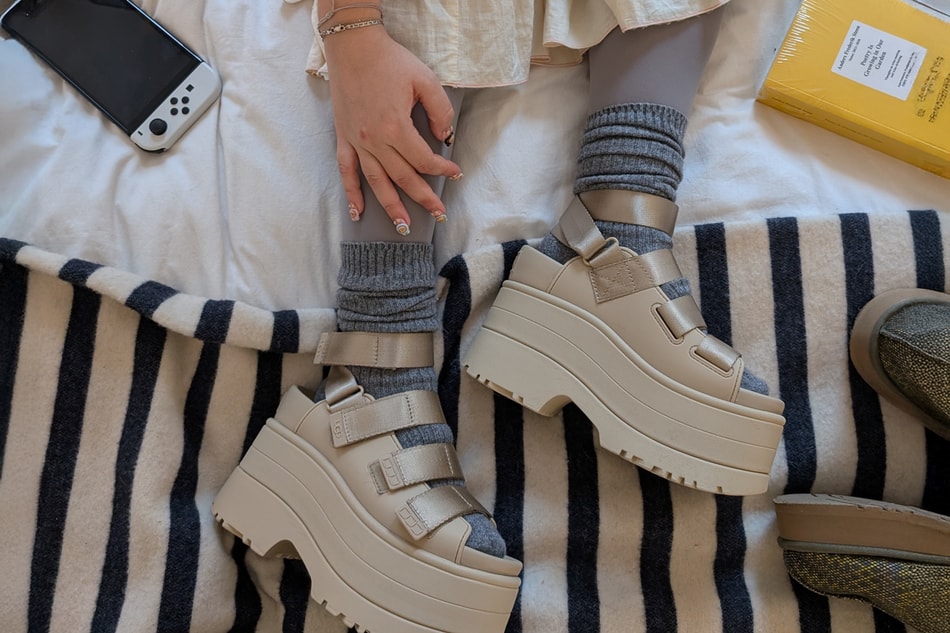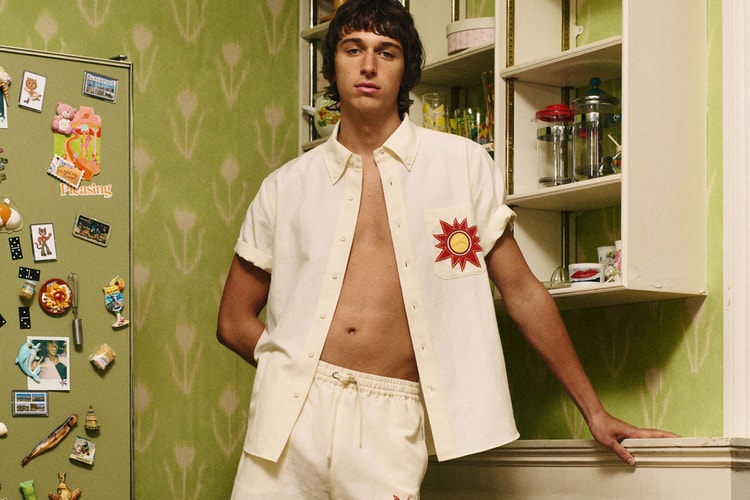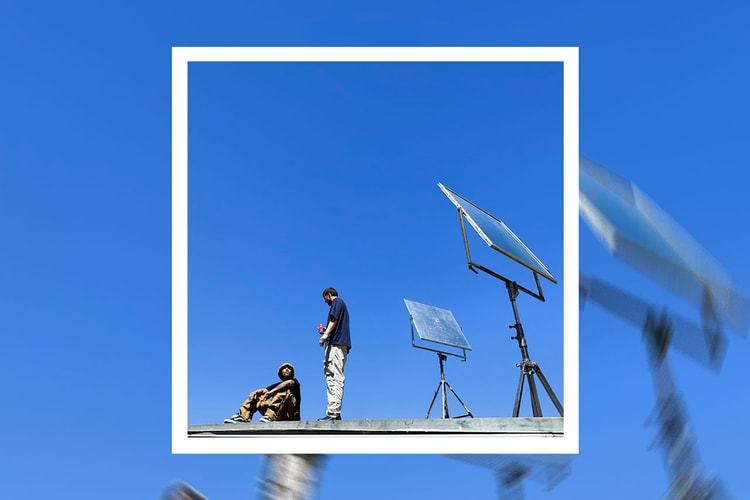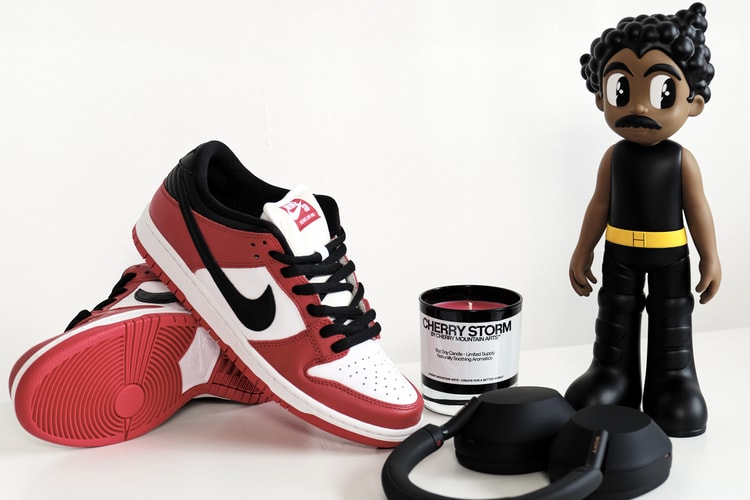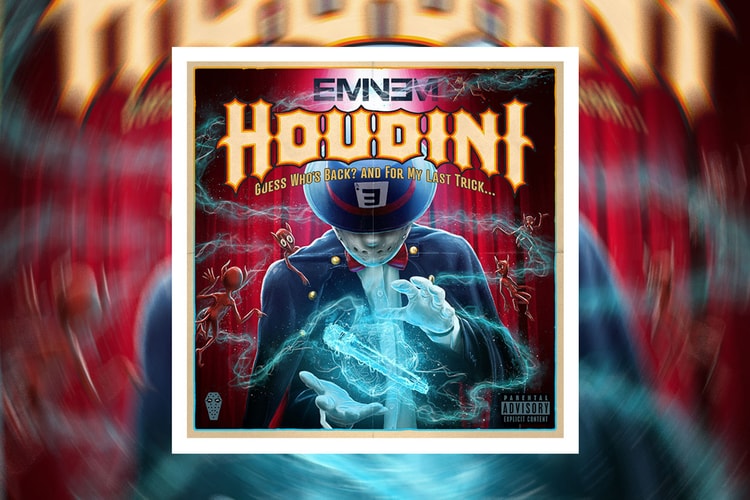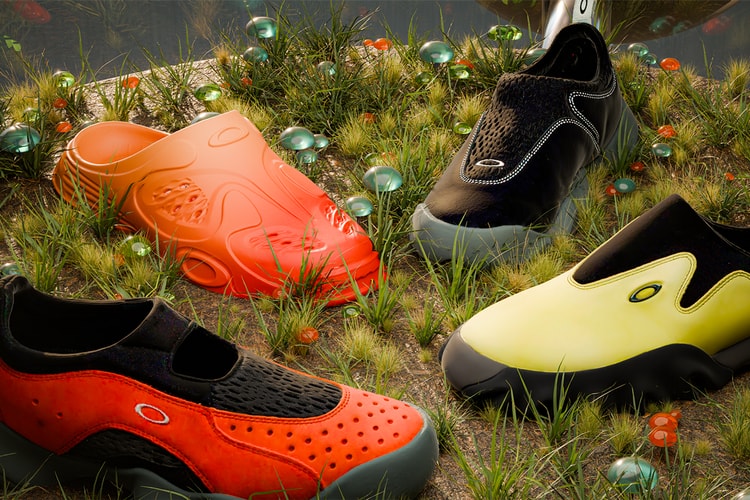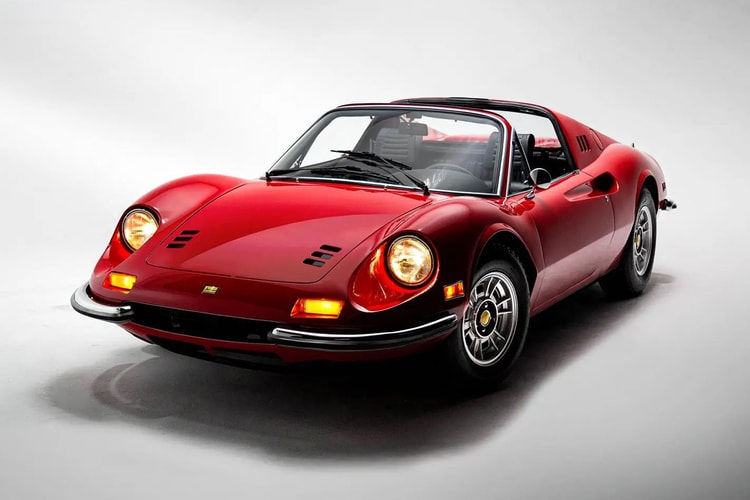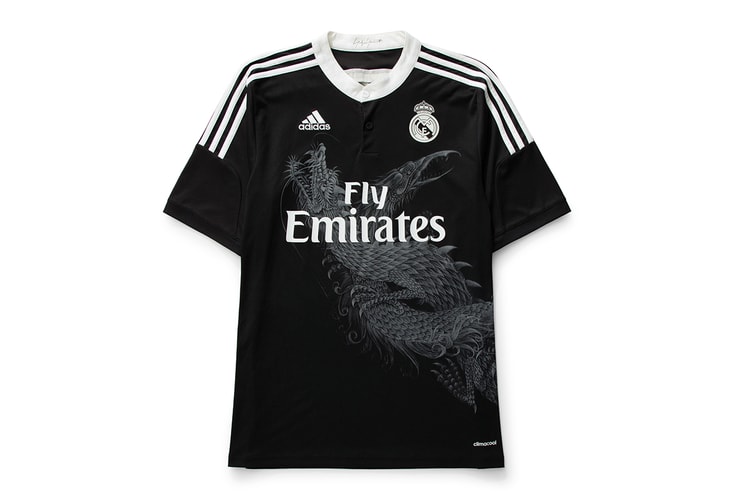Graffiti Legend Eric Haze Celebrates His 30th Year in Japan with a Solo Exhibition Expressing His Past and Future
“This exhibition is both the trajectory of our past activities and a place to present our future activities,” says Haze.
The exhibition “ERIC HAZE 30th ANNIVERSARY EXHIBITION ‘RE HAZE’” by Eric Haze, a living legend of the graffiti scene, will be held within “PARCO MUSEUM TOKYO” at Shibuya Parco, Tokyo, until Monday, June 3. This exhibition commemorates the 30th anniversary of the “HAZE” brand’s arrival in Japan, which bears the creator’s name.
This exhibition spans Haze’s journey over the years. From the 1970s, when he started his career as a member of the graffiti group The Soul Artists, to the 1980s, when he worked in friendly competition with Keith Hering and Jean-Michel Basquiat, creating logos and album jackets for Public Enemy, The Beastie Boys, EPMD, and more. In the 90’s, he established a brand of apparel and accessories with the “HAZE” tag, the originator of the streetwear that would follow. In addition, the exhibition will cover the period from the 2000s onward, when he collaborated with renowned brands including Nike, STÜSSY and Sacai.
The exhibition displays valuable archives from each era, and surprisingly, many of the featured items are said to have been kept by Eric himself. Among them is a poster for an event organized by Kan Takagi at the now-defunct CAVE club in Shibuya, featuring eminent members such as Ryuichi Sakamoto, Hiroshi Fujiwara and Kyoko Koizumi.
Haze, whose large-scale 2022 solo exhibition “INSIDE OUT” is still fresh in our minds, has been working mainly on paintings and drawings for the past 20 years. Additionally, the new exhibition features artworks he created during that period, along with collaborative works with TAKU OBATA and YAMAHA.
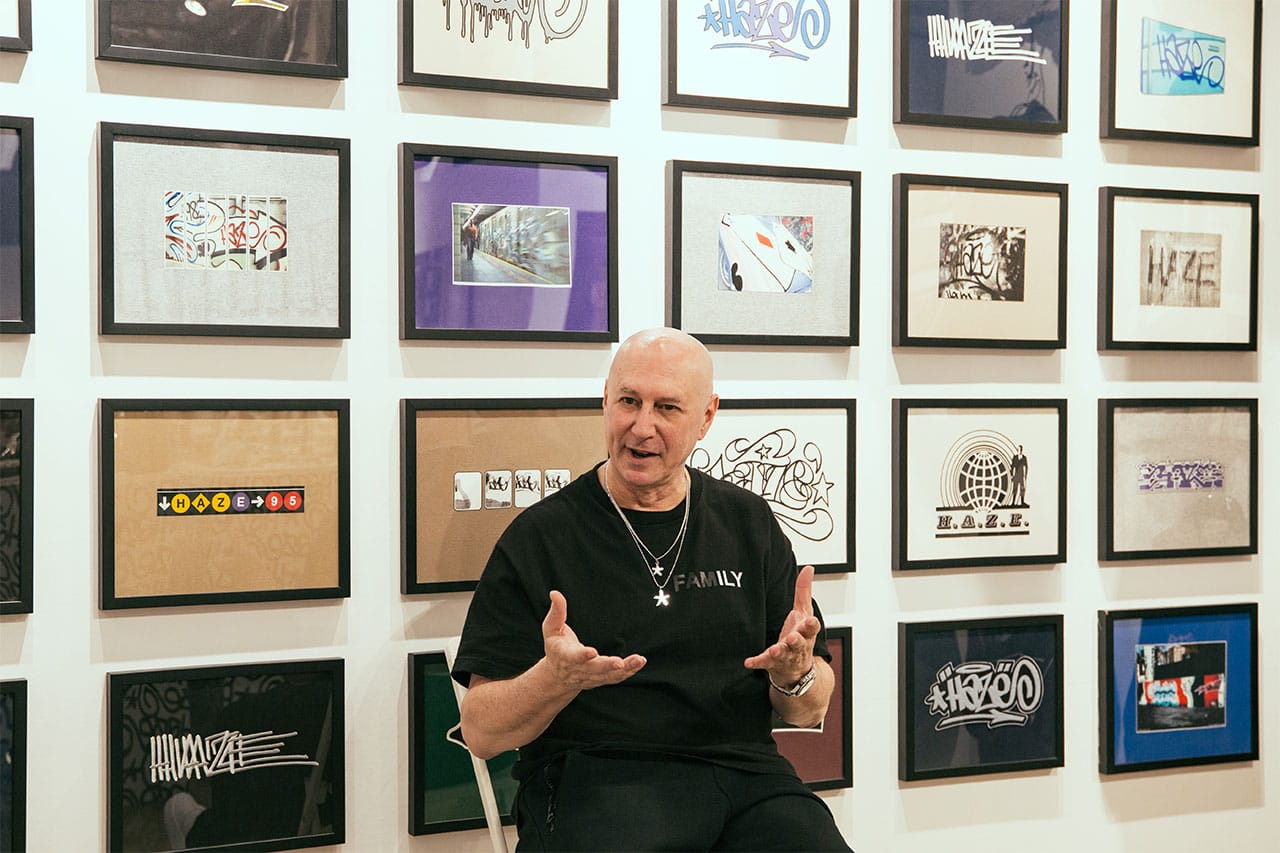
Hypebeast conducted an exclusive interview with Eric Hayes before the exhibition kicked off.
Hypebeast: Tell us about your current projects, your collaborations with Jimmy Choo and Sacai, and the logo design for JP THE WAVY — which is still fresh in the public’s memory. Are there any memorable moments from your recent activities and how did they differ from the collaborative work you have done in the past?
I have been involved in various activities such as art, fashion, and graffiti for almost half a century. When I first started, I felt like all of these activities were far away from each other, like art is this way and fashion is another way. However, these mediums have gradually begun to come closer together, and in the past five to ten years, I feel that they have been integrated into a single culture.
About 20 years ago, when I was still living in California, I spent more time on myself than on my brand and work. So I decided to close the store and move back to New York. I made time to face myself and got married. That’s when I started thinking about the HAZE brand again. The current manager, Jay, joined the HAZE brand, and for the next 10 years, the brand became more than just a hip-hop brand, but a brand with many different layers. We intentionally restructured it ourselves. My identity is as an artist, so I came to think that I needed to convey that I am not just a designer or a hip-hop artist.
Fashion is also transforming with changes in the world. For example, recent years have seen the era of Virgil Abloh. With his arrival, the image of the contemporary designer became a thing of the past, and he paved the way for many designers, including myself, to work from a new perspective. The Jimmy Choo project was a catalyst for me to return to the world of fashion and to educate myself. It changed my perspective at the right time for both myself and the brand and made me realize that the HAZE brand does not speak in terms of design, but in terms of art.
It was a time for me and the HAZE brand to move to a new level. From there, the brand actually expanded and stepped up, and I worked on the uniforms for the U.S. Olympic team and the NBA’s Brooklyn Nets. I think it was very special to go to the next level like this.
Does you mean that you are now able to do various activities in a natural way?
That’s right. More specifically, I feel that I can now be natural in all aspects of my life. Not only in my activities and work, but also in my personal life. When you start a brand, everyone pushes and pushes to make it bigger, don’t they? I was naturally the same way, but over the past 10 years, my spirit and mentality have started to relax and my style has become more relaxed. That made it feel easier, and more importantly, more fun. My passion naturally came back.
For example, when I did the YAMAHA motorcycle exhibition, I realized that 10 years ago, I would have tried to control everything on my own. But now, I can relax and look forward to what will happen, and as a result, the work is better than ever. I am now 62 years old. I finally feel naturally comfortable with my style and identity. The highlight of my recent activities is that I have finally been able to leave the phase where I was struggling with who I was. Whether it’s art, branding, or collaboration, the key is to stay authentic. It’s about being yourself and your partners being authentic as well.
In that sense, I try to intentionally make time for myself. I don’t set deadlines for the art I’m working on right now, but I respect deadlines in my collaborations because I respect my partner and his identity. They have their own value. So this exhibition is not only about me and the HAZE brand but also about the history of the culture so far. Harajuku streetwear, hip-hop, and other related elements are introduced along with legendary collaborators and brands. When we started, we were all little kids. We’ve grown together from there. We’re almost like old men now, but I’m thankful that I’m still here.
This year marks the 30th anniversary of your arrival in Japan. What was the impetus for your entry into the Japanese fashion and culture scene?
The Japanese scene has always been considered important in fashion. This is even more so in street culture. When I started my brand, there were only about 10 streetwear companies in the world, and even in such a situation, Japan had already established the groundwork for acceptance. That is why brands of our generation had a special start in Japan. That is why, even now, the Japanese scene is like a mirror for foreign brands like ours, and we understand how we should be.
As for how it all started, it was so long ago that it’s a bit vague. But I am sure it was an event by Kan Takagi, whose poster is also exhibited now. There was a DJ event at CAVE in Shibuya, and I think this was the timing of my first visit to Japan and Tokyo. It was a kind of “Eric Hayes Welcome Party” and it was a party with all these legendary people. I actually painted at CAVE in Shibuya that day. It was a great start in Japan and such a special opportunity.
Are there any Japanese creators that you have been in contact with since that time? What kind of communication do you have with them now?
Kan Takagi will be DJing today. I also keep in touch with Hiroshi Fujiwara, and I have many friends whom I respect and still keep in touch with most of them. I also keep in touch with Harajuku legends such as Shinsuke Takizawa and Toru Nishiyama, and above all, including in relation to this exhibition, I have been indebted to B’s INTERNATIONAL for a long time. Our relationship goes back to even before I opened my own store. The chairman, Mr. Shinichiro Minagawa, has always supported the HAZE brand, and we have built a relationship with them as true friends, not just business partners. I feel a really strong connection with them. Even when I was away from the brand’s fashion business and concentrated on painting, Minagawa-san became a collector of my work. That is how I was able to remain an artist.
So when I had my solo exhibition in Japan at the end of 2022, I planned to do something since I would be celebrating my 30th anniversary in Japan in about a year. The people who have supported and worked with me on this exhibition are a group of people who have supported me for the past 30 years. The first creators of XLARGE were my neighbors when I lived in LA, and they had their first store about two blocks away. They were really the first to carry my items. I feel like it’s a family business that has grown so much.
I know many of our readers went to the last exhibition, “INSIDE OUT.” Could you tell us about the highlights of this exhibition?
First of all, this is the first time that an exhibition of this scale has been held. In 1995, I held a solo exhibition on Meiji-dori Avenue, but that was also an archival collection. However, almost 30 years have passed since then, and the quality, scale, and content have all been updated. I can say without a doubt that the content of the exhibition is unprecedented. After the first day of the exhibition, that has become an unqualified certainty. In that sense, I am more than happy to be here now.
Are there any specific points you focused on?
Please visit the exhibition first. That is the easiest answer. There are collaborations, limited editions, and pieces created especially for this exhibition, and this exhibition is a group of works that are important to me and my team. I think, through it all, we were able to express not only our history but also our current stance. As you can see, the paintings and monuments are new, as are the bikes and drawings. It’s a good opportunity for visitors to learn about us today, and I think we’re also able to present a view of the future. It’s sometimes said that to see the future, one must know the past, and I am an archivist, which means that I have preserved the past so carefully that I have included it in this exhibition. However, I would like to emphasize that I do not spend time looking back at the past. I am now at the stage of looking for the next challenge or a good opportunity, and I would like to do something that I have not done yet. So, this exhibition is both a trace of my past activities and a presentation of my future activities.
The exhibition also includes a sculptural work in collaboration with TAKU OBATA and a shell chair by Charles Eames. Why did you choose TAKU OBATA as your collaborator and what was the story behind the collaboration?
I have a strong connection with TAKU in terms of artistry and spirit. I felt that when I first saw his work. He felt that way too. I also felt that when two artists of the same generation collaborate, they have their own characteristics, but when they are from different generations or different countries, the chemical reactions and meanings change. New art is born. It was the same when we collaborated with Haroshi.
In Japan, graffiti culture has been passed down to the younger generation and continues to proliferate in the realm of street, fashion, and culture. What about in the United States?
Yes, there was an exhibit in California about 15 years ago called “Art in the Streets,” which was a big deal for the graffiti scene. It was probably the first time that graffiti was officially shown to the masses, and it was a great opportunity for many people to see it. From there, graffiti became recognized as a new culture, and over the past 10 years or so, I think graffiti has become more familiar to everyone. With the rise of graffiti, a new generation has emerged, and recently there have been aerosol artists. I don’t use aerosols anymore, so I can’t speak from their perspective, but I see “sprayication” — a term coined by combining spray and communication — taking place all over the world. I think graffiti is a hip-hop culture that has spread from the U.S. to the rest of the world over the past 50 years. At first, I thought it was just a trend, but it eventually took root and now I feel that it has grown into a common language as a culture.
It’s very difficult to incorporate graffiti into apparel design. No matter how cool the artwork is, when it is put on a T-shirt, it becomes more of an “artwork” than “clothing.” However, I have the impression that the items you create are graffiti, but are incorporated into sophisticated items that can be worn in everyday life. What do you pay attention to when designing apparel?
Thank you very much! I’m glad to hear that. When we first started the brand, it was revolutionary to put a graffiti tag on a t-shirt as a logo. It was a novel idea, and we were able to attract attention and success just by doing it. But now it is more complex, and the language of fashion has grown more sophisticated. So, of course, it would be boring to do the same thing now as it was 30 years ago. I think we have to take more risks and try different things. Otherwise, I won’t be motivated. I am proud that I get to do something authentic with passion and believe in what I am doing. I don’t care what the world says anymore. I just do what I want to do. I will always do what is natural. Maybe that is the philosophy of the HAZE brand now. Dare to go into the darkness, and find what shines in the darkness by yourself! It is a mindset that says, “Take on new challenges.” This is the theme for the next 30 years.
Do you have any other messages for readers?
Tokyo is a special place for all artists, including myself and the HAZE brand. So there is a very good reason why we are exhibiting here in Tokyo for the first time. I am proud of the brand and its history, but I am even more proud of the team and the support. I feel as if I am returning the favor with gratitude for what Tokyo has given me.
View this post on Instagram


